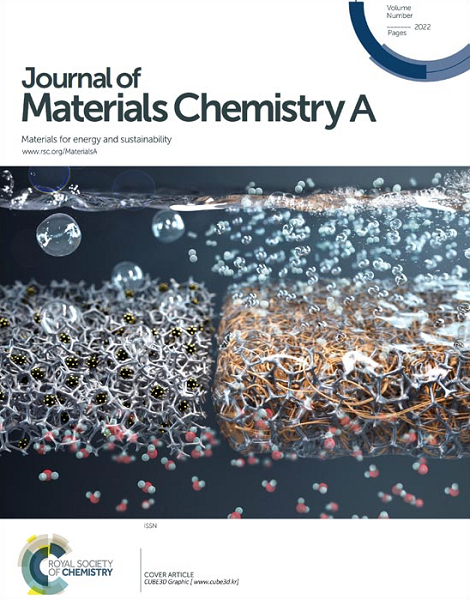Lessening Prussian blue analogues coordinated water with a novel strategy as cathode for Sodium-ion batteries
IF 10.7
2区 材料科学
Q1 CHEMISTRY, PHYSICAL
引用次数: 0
Abstract
Prussian blue analogues (PBAs) are a promising cathode material for sodium-ion batteries, and the iron-based Prussian blue has a higher specific capacity while being widely available and inexpensive, so it has received more widespread attention. However, Fe2+ in the aqueous phase will form the structure of [Fe(H2O)6]2+, water molecules will inevitably be introduced during the synthesis process, resulting in water molecule residues and vacancy defects, which greatly affects the cycling life of PBAs, energy density and bring safety issues. Herein, a facile “ligand pre-exchange strategy” is proposed to synthesize highly crystallized PBAs. Ethylene glycol (EG) is introduced for exchanging water molecules in [Fe(H2O)6]2+ to form a water-deficient solvated structure of [Fe(EG)x(H2O)6-x]2+, which reduces the coordinated water and vacancy defects in the Prussian blue material and forms high-quality Prussian blue crystals. Meanwhile, the formation of [Fe(EG)x(H2O)6-x]2+ was demonstrated by Fourier Transform Infrared Spectrum (FT-IR) and quantum chemical calculations using Density functional theory (DFT), proving this strategy's feasibility. The PB-EG-5 electrode prepared by this strategy has excellent sodium storage performance and fast kinetics, with a specific capacity of 91.3 mAh g-1 at 1000 mA g-1 in a half cell and capacity retention of 70% after 1000 cycles, while, the full cell also has excellent electrochemical performance. This work provides a new feasible solution for the large-scale preparation of high-quality PBAs.求助全文
约1分钟内获得全文
求助全文
来源期刊

Journal of Materials Chemistry A
CHEMISTRY, PHYSICAL-ENERGY & FUELS
CiteScore
19.50
自引率
5.00%
发文量
1892
审稿时长
1.5 months
期刊介绍:
The Journal of Materials Chemistry A, B & C covers a wide range of high-quality studies in the field of materials chemistry, with each section focusing on specific applications of the materials studied. Journal of Materials Chemistry A emphasizes applications in energy and sustainability, including topics such as artificial photosynthesis, batteries, and fuel cells. Journal of Materials Chemistry B focuses on applications in biology and medicine, while Journal of Materials Chemistry C covers applications in optical, magnetic, and electronic devices. Example topic areas within the scope of Journal of Materials Chemistry A include catalysis, green/sustainable materials, sensors, and water treatment, among others.
 求助内容:
求助内容: 应助结果提醒方式:
应助结果提醒方式:


